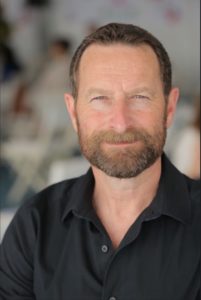Untapped Talent (Looking In, Reaching Out)
HR professionals have been trained to identify specific needs in their organization’s workforce and find people to meet them. However, too narrow a focus can lead to missing out on expertise or talent that could be of extreme benefit to our teams and organizations.
Lacking a crystal ball, how do HR professionals identify untapped talent in existing employees and in candidates? The challenge of answering that question is heightened by the current tight labour market and a number of evolving factors.
Transforming the Talent Search
“We’re back to candidates’ market like we had in early 2008, before the October 2008 crash,” confirms Sandy Dennis, senior executive search consultant with the Farber Group in Vancouver. “In the last 10 years, finding talent wasn’t keeping CEOs up at night, but now it’s probably at the top of their list.”
Dennis cites multiple factors behind the change. More investment in the economy means companies need more people. The digital transformation demands talent that wasn’t needed before, creating net new roles. Established companies are going through transformations, seconding existing employees for projects and then seeking new people to backfill the regular roles. And thanks to an aging population, there are fewer people available to fill the positions vacated by retirements.
“The result is employers are now selling positions or opportunities to candidates, instead of the other way around,” Dennis says. “There’s a major labour shortage in North America that’s causing all employers to pause and look at new strategies. It’s a constant conversation out there and in B.C. in particular.”

Sandy Dennis
Adapting to Future Needs Now
“Employers no longer have the luxury of picking talent from a large pool,” confirms Shandele Cruickshank, CPHR, senior talent acquisition scout at Colliers International, Vancouver. “Finding and hiring ideal candidates can be difficult, expensive and time-consuming, especially for in-demand roles.”
“Traditionally, we used statistical screening based on qualifications and experience, but we didn’t spend enough time on transferable skills. We’re missing out on potentially great employees because
we’re not looking at the potential of the individual to adapt, develop and grow,” says Cruickshank. “If we don’t hire for potential, we’re going to miss out on talent we’ll need in five years’ time. Adaptability may not necessarily be visible on a resume, but past behaviour – if a candidate showed adaptability in past situations – is a good indicator of future behaviour.”
A “Step-up” in Forward Thinking
“We’re trying to encourage clients to be more flexible and open-minded,” Dennis says. “We’re now looking at step-up candidates, too—people who haven’t been there, done that, but are quick learners. They have the capacity to learn quickly, get up to speed quickly and add value.”
“Every company, every role is different, which is why we need that much more emphasis on being open-minded to what transferable skills enable people to do and be. We may not know yet what our needs will be or what the roles will be,” adds Cruickshank. “We need to home in on soft skills—flexibility, adaptability and a focus on continuing development and growth. Look at a candidate’s goals, career goals and interests, look deeper into their motivators and drivers. We need to be clear on how different those are for each person to head them in the right direction.”
Soft Skills for the Future
In an age where artificial intelligence (AI) has moved from the pages of science fiction to a fast-approaching reality, it’s hard to know what qualities organizations might need in employees five or 10 years from now. There will be jobs we haven’t dreamed of yet.
The answer is to look for the abilities that set humans apart from AI.
“There are four things you’re born with that can’t be programmed,” explains Duncan Wardle, the former VP of Innovation and Creativity at Walt Disney Co. and a keynote speaker at the HR Conference + Tradeshow 2019 in Vancouver.
In Wardle’s world and words, those four intrinsically human things are:
- Creativity—The ability to think outside the box, fort or castle;
- Imagination – Humans have amazing imaginations they seldom use.
- Curiosity – Asking “Why?” We learn to stop at the first ‘Why?’ because we’re told there is only one right answer. The third, fourth or fifth ‘Why?’ gets you to a different place than your first one did.
- Intuition—You have a second brain in your gut, and it has more neurons than your first brain. Consumers make internal decisions that are often overlooked.
“The workplace buries these skill sets,” Wardle says. “But because you can’t program them, they will become the most sought-after skills in the future workplace.
“Companies face the same challenge that education does, teaching for jobs that don’t exist yet. The solution is to teach creative problem-solving skills.”
Silly Questions in a ‘What if’ World
“One tool is to bring in a naïve expert to every ideation session,” Wardle says. “That person will be free of your constraints, can ask “silly” questions and give simple solutions.”

Duncan Wardle
In one example, when North American architects were designing an Asian dining facility for Disney, they drew a house. When they brought in a chef, she drew a building that was more like the round bamboo dishes used for dim sum. “Distinctly Disney, authentically Chinese” became the motto for Shanghai Disney.
Wardle is a big proponent of the combined “Rules/What if/Imagine a World if” approach. “For example, at one time the accepted rules for movies were that they were shown at set times in theatres that were dark and dirty. Once you ask, ‘What if I could control that envelope?’ you can take movies out of the theatre.”
Time to Think and Play Invaluable
Employers need to allow employees time to think, Wardle adds. “Where do you get your best ideas? Everywhere but at work. The perfect answer pops into your head 10 minutes after an argument or you get a great idea when you’re in the shower. In the office, people don’t have time to think.
Playfulness is important at work, too. “Our ideas come 87 per cent from our subconscious and 13 per cent from our conscious minds. Most of us only use the 13 per cent for 98 per cent of our day. But if you’re laughing at work, it opens the door to your subconscious,” Wardle says. “Google is considered one of the most innovative companies in the world. It gives employees 20 per cent of their time to think. That’s resulted in gmail, Google maps, Google glasses, even a self-driving car.”
Essential Tools and Innovation
As for his goal at the upcoming CPHR BC & Yukon conference, Wardle is equipped to share a series of tools and behaviours for unlocking the innovative potential we hold as individuals.
“People need tools to take risks. We make it tangible, easy and fun. You want people to use the tools when you’re not there,” Wardle says. “People need to be reminded they are creative, be inspired to be innovative, and have the tools to tap into their potential. It has to start at the top; the CEO has to believe in innovation, or you’ll never be successful at it.”
Wardle believes that building specific innovation departments sends the message that the rest of the employees don’t need to be innovative. “All employees must be innovative, they must have it in their DNA, from the frontline all the way up to senior executives—at Disney, that meant from the cast member in a costume in the theme park all the way to the top.”
“There’s enormous untapped potential inside job candidates and employees, but the biggest single talent that recruiters should seek is creative problem-solving. It can be used across any discipline or industry,” he adds.
Weighing in on Hidden Talents
“Many employers don’t consider decision-making—the ability to weigh information and make decisions. I don’t see that skill consistently examined,” says Shawn Bakker, a psychologist at Psychometrics Canada. That said, “HR is doing a much better job at looking at personality, character and style when evaluating interviews and references,” he adds.
Discovering hidden talents involves different types of hiring tools. Identifying a candidate’s talents and where their potential lies will inform what direction their career should follow, Bakker explains. For example, two engineers might have different talents that make one a great project manager and the other a world bridge expert.
“Whether you can see clearly into the future or not, you should be looking for skills in problem-solving, logical reasoning and decision-making with available information,” says Bakker.
He recommends presenting situational judgement tasks to candidate—realistic scenarios with an operational challenge and some people issues. Candidates who consider the people issues along with the operational ones will probably be better managers of people.
By including a higher degree of realism, behavioural assessment interviews capture different perspectives, which may both be necessary, but in different roles. Standardization allows a fairer assessment of candidates, Bakker says.
Some forms of psychological assessment can identify where an individual has potential. It’s then up to the employer to establish a learning program—including stretch assignments and feedback—to help the employee develop their potential, Bakker concludes.

Shawn Bakker
Four C’s of Hidden Talent
Dennis says the most important candidate characteristics employers should be looking for, that will support changes and develop currently hidden talents, are:
- Capacity—Look for bright, quick studies;
- Cultural fit—This is really important, especially if your company is in transformation.
- Comfortable with constant change–People need to be able to handle change to deal with new systems, processes and procedures, changes in regulatory requirements, etc.; and
- Collaborative—This encourages shared resiliency and innovation.
“Essentially, we need business transformation and change specialists,” Dennis says.
Tech To Target and Tailor Fit
That need has led to organizations, in turn, changing how are reaching out to talent.
“We have to tailor our approach for each individual because what they want from their career can be different from what the next individual wants,” says Cruickshank. “We need to speak to what’s important to the candidate, tell them that our organization can meet their needs, and explain how we’ll do it.”
Last year, Colliers developed a LinkedIn Pipeline Builder. “We originally started with more than 50 job titles in different industries to get a wide net of applicants to consider, says Cruickshank. “It wasn’t as effective as we’d hoped, but it helped us to identify specific industries where people had the skills we wanted. It opened our eyes to industries, job titles and positions we hadn’t known about, and we were able to place candidates as a result.”
Although technology was the tool, it was the human analysis that helped them reach the targeted groups.
“The human aspect is so important to moving forward with that competitive advantage,” explains Cruickshank. “We can cast such a wide net now, with global reach. And with technology automating some of the administrative parts of the HR role, we can place more emphasis on selection, be very targeted in identifying potential in areas we may not have considered before.”
Opening Doors to Diversity and Inclusion
As a result, Cruickshank says, “We can step away from the traditional profile and focus on transferable skills. We can consider diversity and inclusivity, which a software program may not be able to include.”
Dennis also strongly encourages organizations to embrace the non-traditional. “Open your doors to diversity and inclusion. Richer conversations can lead to retention and richer contributions,” she says.
She looks to other countries that are ahead of Canada on the inclusion curve when seeking leaders new to Canada or to companies that are a step or two ahead of the hiring organization.
Developing the Hidden Talents Within
Within your existing employees, “A big piece is having conversations with them,” Cruickshank says. “Having a clear career path is important to people. We need to create a culture where hiring managers are investing in their employees, knowing what paths they want to take and what skills they want to gain or be exposed to, and providing those opportunities.”
“Your culture must offer development opportunities for both existing and new employees. Having the opportunity to fail, with support, is important to learning too, including how to correct a path or approach,” says Bakker. “Some work cultures put more ‘natural value’ on the talents people have and encourage them, while others pay lip service to it, but are pretty thin on the ground. Companies that don’t make the effort to develop and keep people lessen their competitiveness.”
Mapping Uncharted Territory
“The learning quotient—someone’s desire to grow and adapt while things are changing around them—is key,” explains Cruickshank. “We also use a predictive index that only takes a few minutes,

Shandele Cruickshank, CPHR
but helps identify an individual’s natural motivators or behaviours. It’s not a decision-making tool, but it allows us to align people’s preferences with the roles that we have, so we’re setting them up for success.”
“Every one of us has a skill set or something we’re good at that we use frequently outside our place of employment, but rarely use within it. It might be coaching or mentoring, or creative endeavours. It’s important not to let our roles define us in our totality,” says Bakker.
“Talent mapping is important for each individual. There are many paths they can take, not just in their current business line. Sharing their plans makes others aware of where they want to go, and they may learn of opportunities they didn’t think were open to them,” Cruickhank adds. “Existing employees can grow through opportunities that are aligned to our business needs and goals. They should experience constant growth and development,
“Organizations are full of people who have all these hidden talents, but they’re sometimes described in different language and the individual can’t explain them adequately,” Bakker says. “For example, a candidate coming from a military background may not have recognized or labelled talents such as leadership or logistics. They need to take a step back to label their skills as they are in the broader world of work, and then search for where they might find their next opportunity.”
Engaging Where it Counts
Some companies are doing testing at various levels of employment, Bakker says. “It helps people discover what’s important to them and connect that to the organization; then they can be supported to pursue that link through various learning modules and development that will put them on a path that is more satisfying, interesting and engaging for them.”
“Not everyone on a team is going to be a go-getter or on the leadership track, yet their ability to get work done has a huge effect on the company. Recognizing what makes them happy, and that they’re good at, is the key to maintaining work engagement,” says Bakker. “Everyone wins when you have engaged people in the workplace.”
Looking Outside the Want Ads
Both inside and out of the office, HR professionals are having to be more creative as a result.
“Candidates aren’t answering ads, so we have to find ways to reach them,” says Dennis. “We need to meet more people and get referrals, through constant networking and pipelining—watching for potential candidates even when we don’t have an opening. We identify passive candidates, people who aren’t looking for a new position, but could be enticed.”
“We need to brand our organizations to attract talent. And you must ensure you set up growth opportunities and the chance for internal advancement,” says Dennis, adding that, while compensation was once the primary motivator for candidates, “Organizations must be flexible and create growth opportunities if they want to retain talented employees.”
“In future, we won’t be looking for specific skills—the requirements are changing and aren’t going to be the same in 10 years,” Dennis concludes. “We need to hire people who are dynamic, have good capacity, are quick studies and have transferable skills.”
After all, people who think like that often have hidden talents—and serve as a catalyst for others and organizations alike.
Nancy Painter is an award-winning communication consultant and writer based in Surrey. She is an active member in both the International Association of Business Communicators and the Professional Writers Association of Canada.








